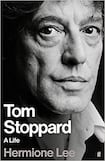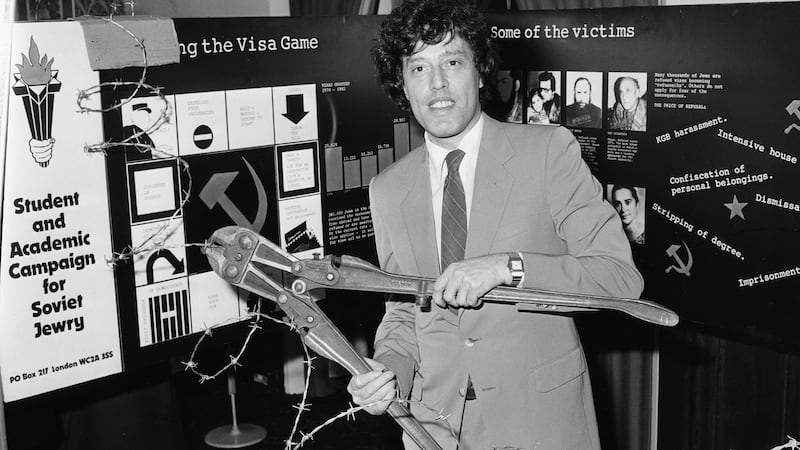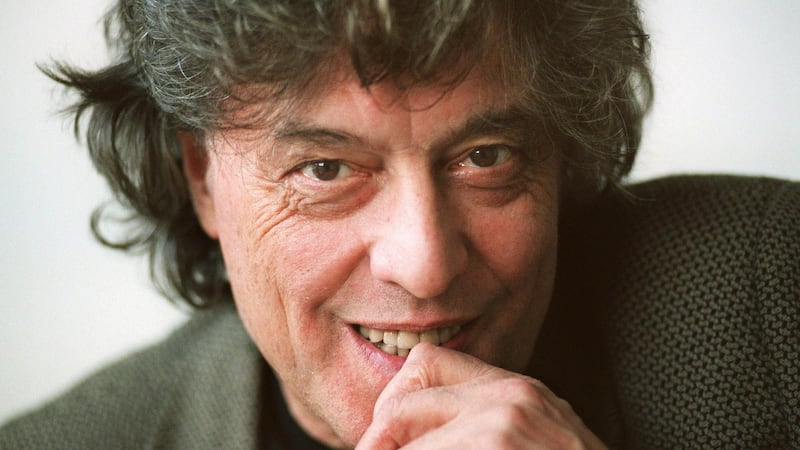
In 2013, the playwright Tom Stoppard approached Oxford professor Hermione Lee and asked her to write his biography. Lee had published acclaimed lives of Virginia Woolf, Edith Wharton and Penelope Fitzgerald. But this is her first biography of a man, her first living subject and her first playwright. In the event, Tom Stoppard: A Life shows that he has chosen well. This is a hugely impressive work.
Lee’s book has the scope of a novel; it is superbly researched and written with a rare empathy and understanding of human nature. Tom Stoppard has written some of the most important plays of the past 50 years. These challenging works each receive detailed analysis here. It helps that its subject is still alive and professionally active: Leopoldstadt was premiered in London’s West End in January, enjoying six weeks of success before being prematurely closed by the pandemic lockdown.
The pandemic is not the first time Stoppard has confronted global disaster. He was born Tomás Sträussler in Czechoslovakia in 1937 to a Jewish doctor and his wife. Eight months later, the Nazis invaded and the family fled to Singapore. In 1942 they attempted to flee again when the Japanese invaded. Marta and her two sons, Petr and Tomás, went on a ship to – they thought – Australia but it ended up in India. Eugen sought to follow, on a ship bound for Australia. It was torpedoed and sunk; they never saw him again.
Several years later, the attractive 35-year-old widow was wooed and won by a British army officer, Maj Kenneth Stoppard, who promptly brought his new family from India to England in 1946. Tomás Sträussler became Tom Stoppard, to all intents and purposes a young English schoolboy. The past was behind them and not mentioned. As Lee puts it: “She never told her sons, either that she was Jewish or that most of her family had perished in the Holocaust.”

The Straüssler family background took decades to surface properly. Stoppard’s biographer shows with finesse the slow process by which this occurred. In 1993 Stoppard (and his mother, in her early 80s, who accompanied him) asked of a relative who met with them in London: “I mean, how Jewish were we?” To which she replied: “You were completely Jewish.”
In his most recent plays, Stoppard has turned from the matter of England, which preoccupied him for decades, to examine his European heritage: first, his Czech origins in 2006’s Rock’n’Roll, where he imagines an alternative existence for himself if he had returned from England to live in Czechoslovakia; and now in Leopoldstadt, where the playwright contemplates the fate of those family members who were not lucky enough to escape.
The final page of the play is a direct transcription of the questions Stoppard asked about various family members. The answers were almost all the same: “Auschwitz.”
Lucky breaks
The luck remained with Tom as he grew up in England. He associated the country with the freedom of the individual and of the press. The young Stoppard chose to become a journalist. Bristol, where the family now lived, was a hive of theatre. A brilliant 23-year-old actor named Peter O’Toole starred in Hamlet and Waiting for Godot. Shakespeare and Beckett fizzed in Stoppard’s brain and fused over the years to inspire his first play in 1967, Rosencrantz and Guildenstern Are Dead. When it premiered at the Edinburgh Fringe it was rubbished by the dailies: “Inexplicable throughout” (Daily Mail).
Then on Sunday Bill Bryden in the Observer proclaimed it “the most brilliant debut since John Arden’s”. Kenneth Tynan was on the phone on Monday on behalf of the National Theatre, where he was dramaturg and adviser. The more old-school Laurence Olivier took a bit more persuading but was won around by Tynan, and the play was a triumph. Jumpers followed in 1972, mixing farce with metaphysics. I saw it that year as a student. Michael Horden was wonderfully rumpled as the philosopher, repeatedly asking “Is God?”, and Diana Rigg was radiant as his wife Dotty: “her talent was luminous”, as Stoppard remarked last month when she died.

Stoppard may not have gone to university, but he remained a scholar in his own creative way when it came to preparing a play. Declan Kiberd remembers the playwright calling on Prof Richard Ellmann in his Oxford rooms in the 1970s to discuss Ellmann’s biography of Joyce, which provided the foundational story of 1974’s Travesties. Other plays followed, roughly every four or five years. Some were successful; others less so.
In 1993’s Arcadia, seen by Dublin audiences in two productions at the Gate, everything came together in perfect equilibrium: ideas about chaos theory and emotion, seriousness and humour, the past and the present. His most recent plays, exploring his hitherto suppressed European heritage, richly deserve to be seen in Dublin.
Stratospheric ascent
Stoppard and his first wife, Josie, married young and had two sons. But she could not keep up with his stratospheric ascent, and in one press photograph is shown standing behind him with “Mrs Stoppard” on her apron. The marriage with Miriam was the meeting of two glamorous, professionally driven people, and her media career as a health correspondent prospered along with his. They also had two sons, the second of whom, Ed, is a successful actor. The Stoppards’ marriage was reduced to their waving at each other as they individually passed through international airports; they eventually split.
Stoppard went on to lengthy relationships with two actresses. For both, he wrote some of his best parts and finally refuted the long-standing charge that he did not know how to write women. Felicity Kendall had just emerged from her own marriage and wished to preserve her independence. Sinéad Cusack made it clear from the start that she intended staying married to Jeremy Irons and close to their two sons. It was news to me that Tom Stoppard and Sinéad Cusack had a relationship. When her long search for her first son was finally successful in 2006, she elected to spend time with Richard Boyd Barrett in Dublin rather than with Stoppard in the house they shared in France.
Cusack was friendly with Sabrina Guinness, who started seeing Stoppard and, when she learned they were to be married, remarked: “You know, Sabrina has always been looking for a good man; and now she’s got the best man in the world.”
But the social side is only the half of it. Hermione Lee has done as well anybody could to bring this fundamentally private man to light. But the core of Tom Stoppard remains hermetic, sealed. His biographer clearly shows he is fundamentally happiest when he is on his own, working through the night on his latest play. In December 2014 my wife and I glimpsed him as we passed London’s National Theatre. Sitting outside on a freezing cold day, a recognisable Stoppard was working on the script of The Hard Problem (then in rehearsal) with intense concentration, exhaling clouds from an endless stream of cigarettes. It is how I will always see him.He is a great playwright, and this is a great biography.











